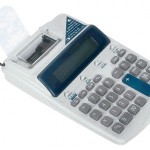Stock – Asset or Liability?
When does an asset turn into a liability?
 We all think of stock as a business asset. This is the stock that fills your warehouse and is there to be sold. Perhaps after you bought the raw materials you have even made it into something new. And we know it is an asset because your bank manager may even consider lending to you on the back of it.
We all think of stock as a business asset. This is the stock that fills your warehouse and is there to be sold. Perhaps after you bought the raw materials you have even made it into something new. And we know it is an asset because your bank manager may even consider lending to you on the back of it.
So, how can this asset be a liability?
If you think of your liabilities as those parts of your business that are stopping you from progressing then stock, in particular, dead, slow moving or redundant stock is definitely a hindrance.
In an ideal world, stock would be delivered at the moment that you needed it either to fulfil production requirements and/or a sale. Your customer would pay you when the order was placed and then you would pay your suppliers.
But in truth, stock often lies in warehouses for months, sometimes years, is paid for months before it is ever sold and sometimes (hopefully rarely) your customers don’t even pay for it.
Stock Types
We would normally broadly classify stock into 3 types that are liabilities and 1 that is an asset. The four types of stock are:
Liability 1 – Redundant Stock is where you are no longer trying to sell because it is no longer in your catalogue or sales literature or it is simply out of date.
Liability 2 – Dead Stock is items that are promoted but never move.
Liability 3 – Slow Moving Stock is when there is a market for the product, but not in significant numbers.
Good Stock – Sales are regular and stable.
You can see that the first two categories are very similar. Both are items that, in all reality, cost you money each day to store and would be better off being scrapped to make room for faster moving items. Perhaps it is worth one last email to see if anyone will take them off your hands at any price.
Slow moving stock is a real drain on your business. It takes up space often with a re-order levels that equates to several months, sometimes years, of sales. Can you stop selling them? Can you re-order fewer or perhaps only to satisfy particular orders? Slow moving stock can include the unfashionable colours, big and small sizes.
If you hold stock, then a vital part of your cash flow management should be identifying redundant, dead and slow moving items and taking appropriate action to either sell, liquidate or dispose of the stock. You should utilise data that you hold to estimate likely patterns of sales between years and within ranges.
Finally, do not make the cardinal sin by buying more dead stock. Stories abound of purchases of stock that are triggered by a one off purchase by a customer. Imagine your relief at selling the last 133mm widget that had been on the shelf for 10 years and then finding that an order has been placed automatically by your purchasing syystem at the minimum re-order level of 6. You now have 60 years of stock on hand. You might laugh but it does happen!
For more information concerning stock control and the possibility of grant funding contact Brian Russell on (01661) 872004 or by email: Brian.Russell@profitabilitygroup.co.uk. Alternatively complete the form above to receive our FREE “Boost your Profits” download.
